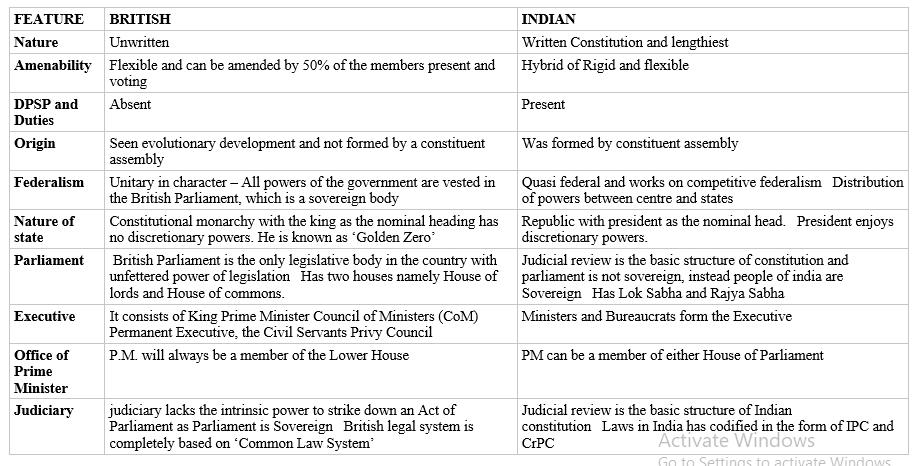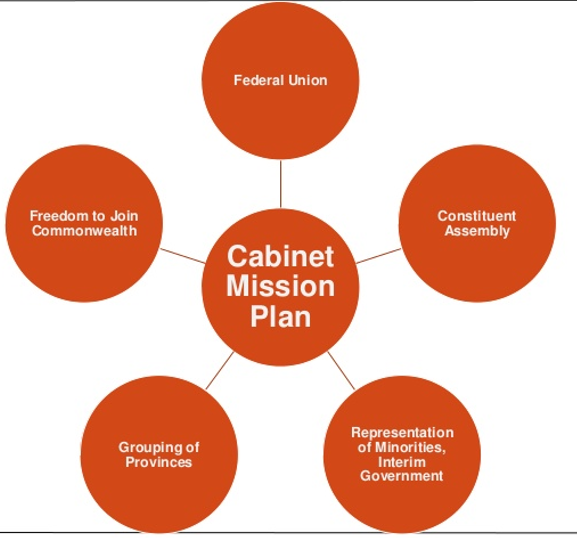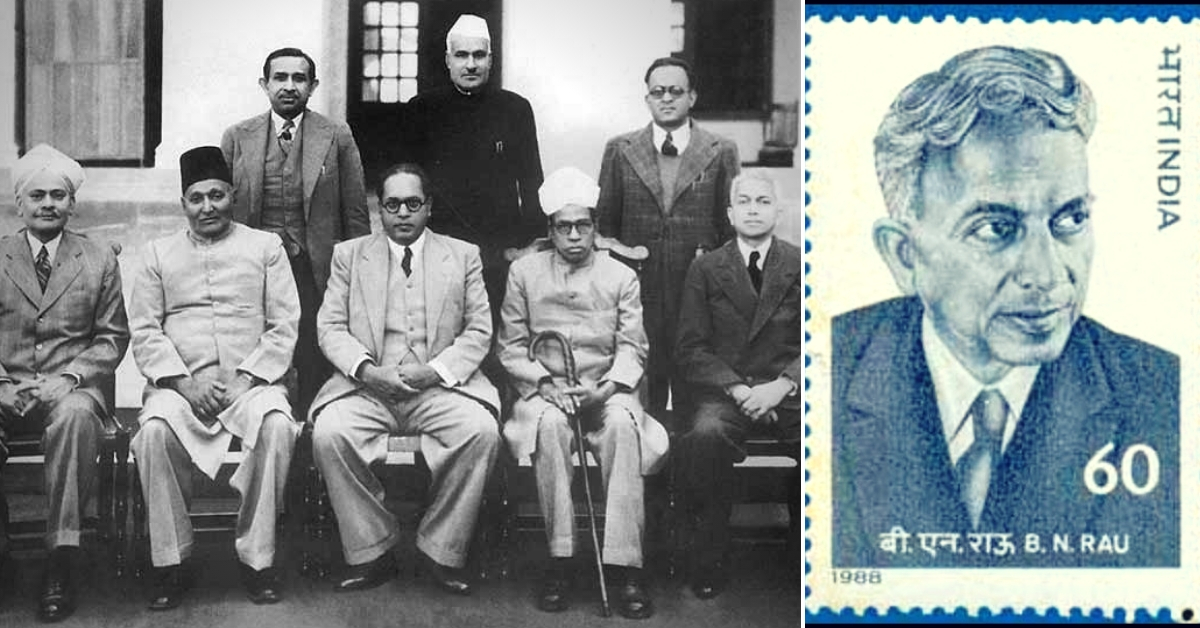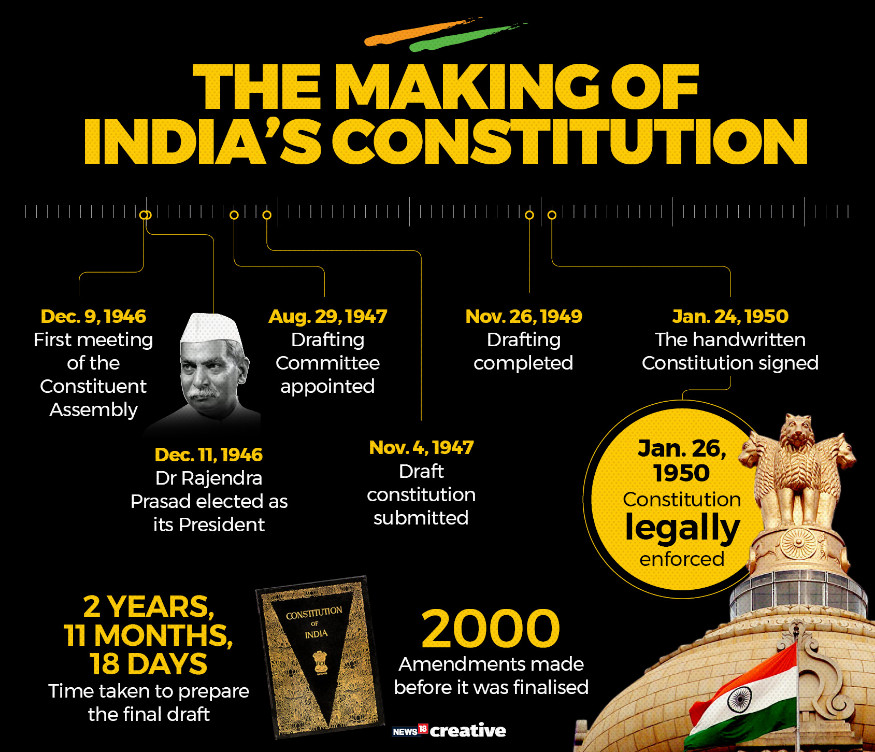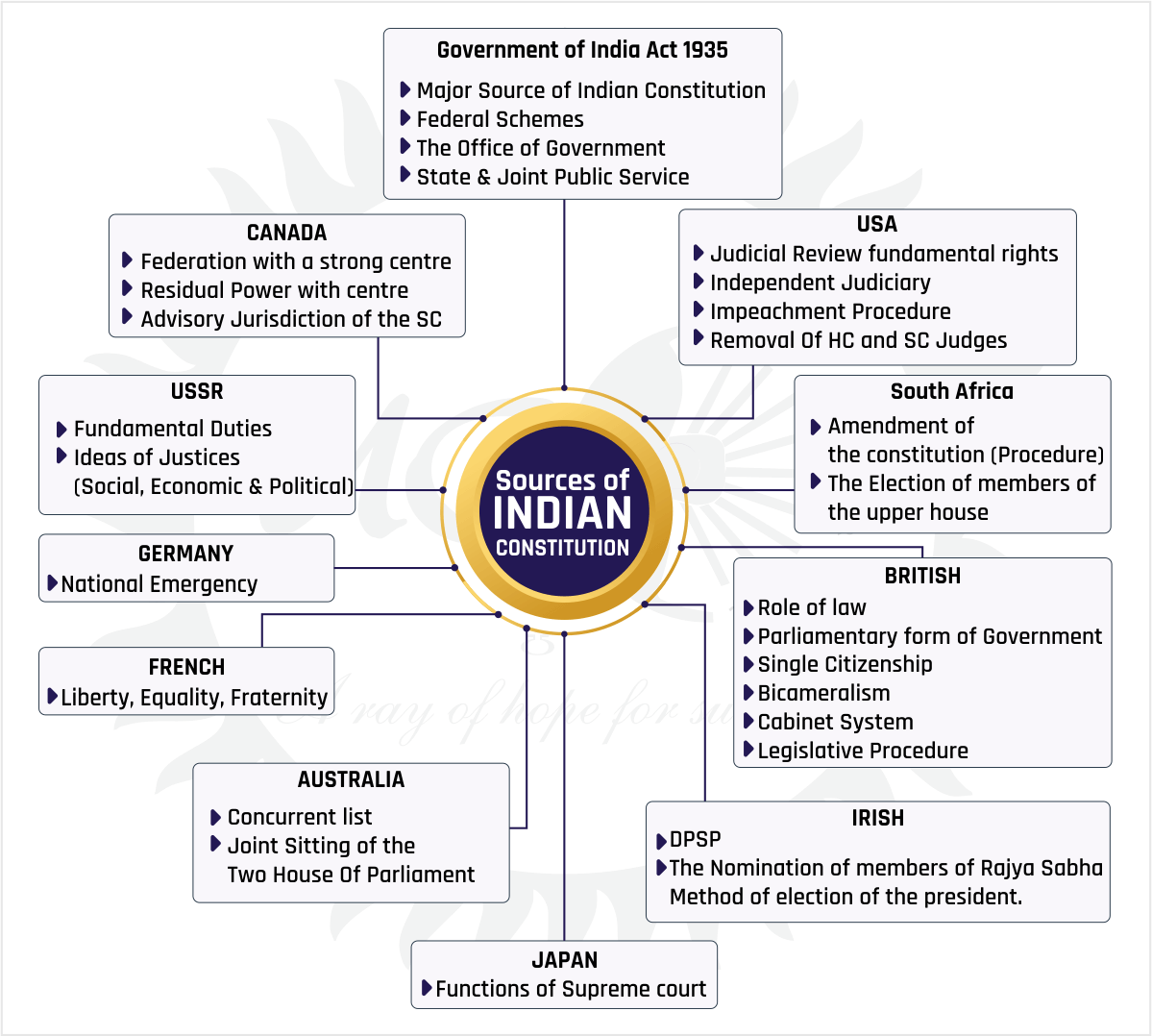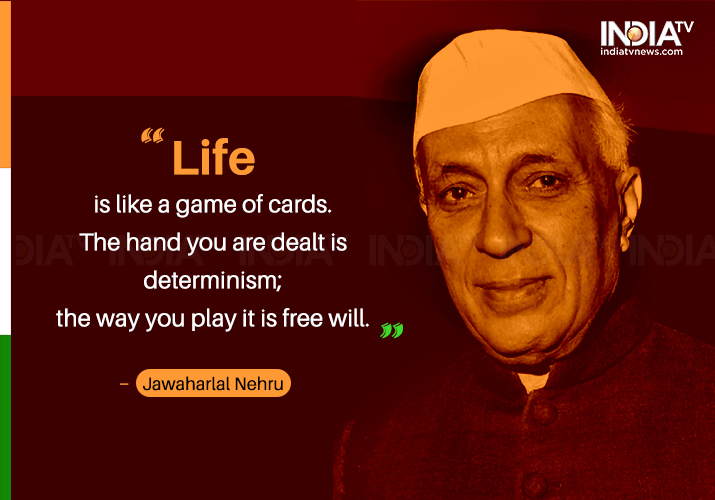Static Quiz on Polity (Making of the Constitution)
Quiz-summary
0 of 10 questions completed
Questions:
- 1
- 2
- 3
- 4
- 5
- 6
- 7
- 8
- 9
- 10
Information
Static Quiz on Polity (Making of the Constitution)
You have already completed the quiz before. Hence you can not start it again.
Quiz is loading...
You must sign in or sign up to start the quiz.
You have to finish following quiz, to start this quiz:
Results
0 of 10 questions answered correctly
Your time:
Time has elapsed
You have reached 0 of 0 points, (0)
Categories
- Not categorized 0%
- 1
- 2
- 3
- 4
- 5
- 6
- 7
- 8
- 9
- 10
- Answered
- Review
- Question 1 of 10
1. Question
Which of the following Committees of the Constituent Assembly was chaired by Jawaharlal Nehru?
CorrectAns;- b) Union Powers Committee
Explanation;-
• Union Powers committees was headed by Jawaharlal Nehru.
• Refer below image for Committees of Constituent Assembly of India
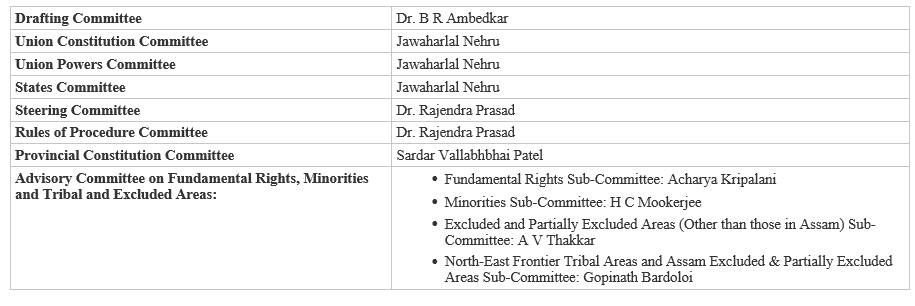 Incorrect
IncorrectAns;- b) Union Powers Committee
Explanation;-
• Union Powers committees was headed by Jawaharlal Nehru.
• Refer below image for Committees of Constituent Assembly of India

- Question 2 of 10
2. Question
Which of the following are the common features of India and U.K?
1) Supremacy of Parliament
2) a written Constitution
3) Bicameralism
4) Prime Minister is the leader of the largest party on the floor of the House.
CorrectAns;- c) 3 and 4
Explanation;-
• The 3rd and 4th point are common between India and UK, Supremacy of Parliament is there in UK but not in India
• India constitution is written , as in the case of UK’s its Un Written.
Refer below image for differences between UK and India.

Please click on this for more explanation of India and UK Constitution difference.
IncorrectAns;- c) 3 and 4
Explanation;-
• The 3rd and 4th point are common between India and UK, Supremacy of Parliament is there in UK but not in India
• India constitution is written , as in the case of UK’s its Un Written.
Refer below image for differences between UK and India.

Please click on this for more explanation of India and UK Constitution difference.
- Question 3 of 10
3. Question
The Constituent Assembly was setup under the
CorrectAns;- b) Cabinet Mission Plan
Explanation;-
• The Cabinet Mission of 1946 to India aimed to discuss and plan for the transfer of power from the British Government to Indian leadership, providing India with independence.
• Formulated at the initiative of Clement Attlee, the Prime Minister of the United Kingdom, the mission consisted of Lord Pethick-Lawrence, the Secretary of State for India, Sir Stafford Cripps, President of the Board of Trade, and A.V. Alexander, the First Lord of the Admiralty.
• Lord Wavell, the Viceroy of India, did not participate.
 Incorrect
IncorrectAns;- b) Cabinet Mission Plan
Explanation;-
• The Cabinet Mission of 1946 to India aimed to discuss and plan for the transfer of power from the British Government to Indian leadership, providing India with independence.
• Formulated at the initiative of Clement Attlee, the Prime Minister of the United Kingdom, the mission consisted of Lord Pethick-Lawrence, the Secretary of State for India, Sir Stafford Cripps, President of the Board of Trade, and A.V. Alexander, the First Lord of the Admiralty.
• Lord Wavell, the Viceroy of India, did not participate.

- Question 4 of 10
4. Question
Who was India’s Constitutional Advisor?
CorrectAns;- c) B.N. Rao
Explanation;-
• B.N. Rao was also the first Indian judge at the International Court of Justice (ICJ).
 Incorrect
IncorrectAns;- c) B.N. Rao
Explanation;-
• B.N. Rao was also the first Indian judge at the International Court of Justice (ICJ).

- Question 5 of 10
5. Question
In the Constituent Assembly which words were associated with the Parliament
CorrectAns;- c) Parliament of the Federation
Explanation;-
Self Explanatory.
IncorrectAns;- c) Parliament of the Federation
Explanation;-
Self Explanatory.
- Question 6 of 10
6. Question
Who said, ‘I feel, however, good a Constitution may be, it is sure to turn out bad because those who are called to work it, taken to be a bad lot. However bad a Constitution may be, it may turn out to be good if those who are called to work it, happens to be a good lot. The working of a Constitution does not depend wholly upon the nature of the Constitution’
CorrectAns;- d) None of the above
Explanation;-
As the above Quote was said by Dr Ambedkar Ji , as attached below image about the same quote.

 Incorrect
IncorrectAns;- d) None of the above
Explanation;-
As the above Quote was said by Dr Ambedkar Ji , as attached below image about the same quote.


- Question 7 of 10
7. Question
The constituent assembly was constituted under the scheme formulated by the Cabinet Mission Plan. What were the features of the scheme are not correct ?
1) One seat was to be allotted for every million population.
2) Voting was to be by the method of proportional representation by means of single transferable vote.
3) The representatives of princely state were to be nominated by the heads of princely states.CorrectAns;- d) None of the above
Explanation;-
• As question asked to choose not correct but all the statements are correct that’s why D answer
• In 1934, M. N. Roy, a pioneer of communist movement in India and an advocate of radical democratism put forward the idea of a Constituent Assembly for India.
• In 1935, the Indian National Congress (INC), for the first time, officially demanded a Constituent Assembly to frame the Constitution of India.
• In 1938, Jawaharlal Nehru, declared that ‘the Constitution of free India must be framed, without outside interference, by a Constituent Assembly elected on the basis of adult franchise’.
• The demand was finally accepted in principle by the British Government in the ‘August Offer’ of 1940.
• In 1942, Sir Stafford Cripps, came to India with a draft proposal on the framing of an independent Constitution to be adopted after the World War II.
• The Cripps Proposals were rejected by the Muslim League which wanted India to be divided into two autonomous states with two separate Constituent Assemblies.
• Finally, the Cabinet Mission (Lord Pethick Lawrence, Sir Stafford Cripps and A V Alexander) Plan was accepted.
As Per Cabinet Mission Plan;-• Total strength of Constituent Assembly – 389 (296 – British India and 93 – Princely States).
• Out of 296, 292 from 11 eleven governors’ provinces (Madras, Bombay, UP, Bihar, Central Provinces, Orissa, Punjab, NWFP, Sindh, Bengal and Assam) and 4 from 4 Chief Commissioner’s provinces (Delhi, Ajmer–Merwara, Coorg and British Baluchistan).
• Seats were allotted based on population ,One seat roughly for one million population.
• Seats in British Provinces were divided amongst – Muslims, Sikhs and General (all excluding Muslims and Sikhs)
• Representatives of each community were to be elected by members of that community in the provincial legislative assembly and voting was by proportional representation by means of single transferable vote (Indirect election).
• Representatives from princely states would be nominated by heads of these princely states.
• Princely states decided to stay away from the constituent assembly.
• The Constituent Assembly did not include Mahatma Gandhi and M. A. Jinnah.
IncorrectAns;- d) None of the above
Explanation;-
• As question asked to choose not correct but all the statements are correct that’s why D answer
• In 1934, M. N. Roy, a pioneer of communist movement in India and an advocate of radical democratism put forward the idea of a Constituent Assembly for India.
• In 1935, the Indian National Congress (INC), for the first time, officially demanded a Constituent Assembly to frame the Constitution of India.
• In 1938, Jawaharlal Nehru, declared that ‘the Constitution of free India must be framed, without outside interference, by a Constituent Assembly elected on the basis of adult franchise’.
• The demand was finally accepted in principle by the British Government in the ‘August Offer’ of 1940.
• In 1942, Sir Stafford Cripps, came to India with a draft proposal on the framing of an independent Constitution to be adopted after the World War II.
• The Cripps Proposals were rejected by the Muslim League which wanted India to be divided into two autonomous states with two separate Constituent Assemblies.
• Finally, the Cabinet Mission (Lord Pethick Lawrence, Sir Stafford Cripps and A V Alexander) Plan was accepted.
As Per Cabinet Mission Plan;-• Total strength of Constituent Assembly – 389 (296 – British India and 93 – Princely States).
• Out of 296, 292 from 11 eleven governors’ provinces (Madras, Bombay, UP, Bihar, Central Provinces, Orissa, Punjab, NWFP, Sindh, Bengal and Assam) and 4 from 4 Chief Commissioner’s provinces (Delhi, Ajmer–Merwara, Coorg and British Baluchistan).
• Seats were allotted based on population ,One seat roughly for one million population.
• Seats in British Provinces were divided amongst – Muslims, Sikhs and General (all excluding Muslims and Sikhs)
• Representatives of each community were to be elected by members of that community in the provincial legislative assembly and voting was by proportional representation by means of single transferable vote (Indirect election).
• Representatives from princely states would be nominated by heads of these princely states.
• Princely states decided to stay away from the constituent assembly.
• The Constituent Assembly did not include Mahatma Gandhi and M. A. Jinnah.
- Question 8 of 10
8. Question
Which of the following statements are correct about constituent Assembly?
1) Constituent Assembly adopted the national flag on July 22, 1947.
2) Constituent Assembly adopted the national anthem on January 24, 1950.
3) On January 24, 1950, the Constituent Assembly held its final session.CorrectAns;- d) All of the above.
Explanation;-
• All the above statements are correct.
• Constituent Assembly ratified India’s membership of the Commonwealth in May 1949.
• It adopted the national flag on July 22, 1947.
• It adopted the national anthem and national song on January 24, 1950.
• The Assembly elected Dr. Rajendra Prasad as the first President of India on January 24, 1950.
• In all, the Constituent Assembly had 11 sessions over two years, 11 months and 18 days.
• The Draft Constitution was considered for 114 days.
• On January 24, 1950, the Constituent Assembly held its final session.
• It however continued as the provisional parliament of India from January 26, 1950 till the formation of new Parliament after the first general elections in 1951-52.
• The Provisional Parliament ceased to exist on April 17, 1952. The first elected Parliament with the two Houses came into being in May 1952.
The Assembly was criticized on various grounds like –• Not a representative Body
• Not a Sovereign Body
• Time Consuming
• Dominated by Congress
• Lawyer-Politician Domination
• Dominated by HindusIncorrectAns;- d) All of the above.
Explanation;-
• All the above statements are correct.
• Constituent Assembly ratified India’s membership of the Commonwealth in May 1949.
• It adopted the national flag on July 22, 1947.
• It adopted the national anthem and national song on January 24, 1950.
• The Assembly elected Dr. Rajendra Prasad as the first President of India on January 24, 1950.
• In all, the Constituent Assembly had 11 sessions over two years, 11 months and 18 days.
• The Draft Constitution was considered for 114 days.
• On January 24, 1950, the Constituent Assembly held its final session.
• It however continued as the provisional parliament of India from January 26, 1950 till the formation of new Parliament after the first general elections in 1951-52.
• The Provisional Parliament ceased to exist on April 17, 1952. The first elected Parliament with the two Houses came into being in May 1952.
The Assembly was criticized on various grounds like –• Not a representative Body
• Not a Sovereign Body
• Time Consuming
• Dominated by Congress
• Lawyer-Politician Domination
• Dominated by Hindus - Question 9 of 10
9. Question
Match List – I with List – II and select the correct answer from the codes given below.
List – I List – II
(Features Sources of Indian Constitution)
1. Judicial British Review, Fundamental Rights a) British
2. Single Citizenship b) Irish
3. Nomination of Members to Rajya Sabha c) Canadian
4. Residuary Powers d) AmericanCorrectAns;- c) 1-d, 2-a, 3-b, 4-c
Explanation;-
Below attached image of related to sources of Indian constitution from various countries.
 Incorrect
IncorrectAns;- c) 1-d, 2-a, 3-b, 4-c
Explanation;-
Below attached image of related to sources of Indian constitution from various countries.

- Question 10 of 10
10. Question
Who made the following statement in the Constituent Assembly in connection with the Amendment Procedure of the Constitution of India?
‘That while we want this Constitution to be sold and as permanent as a structure we can make it, nevertheless there is no permanence in Constitutions. If you make anything rigid and permanent, you stop the Nations’ growth, the growth of a living, vital organic people’.
CorrectAns;- b) Jawaharlal Nehru
Explanation;-
Self Explanatory.
 Incorrect
IncorrectAns;- b) Jawaharlal Nehru
Explanation;-
Self Explanatory.


